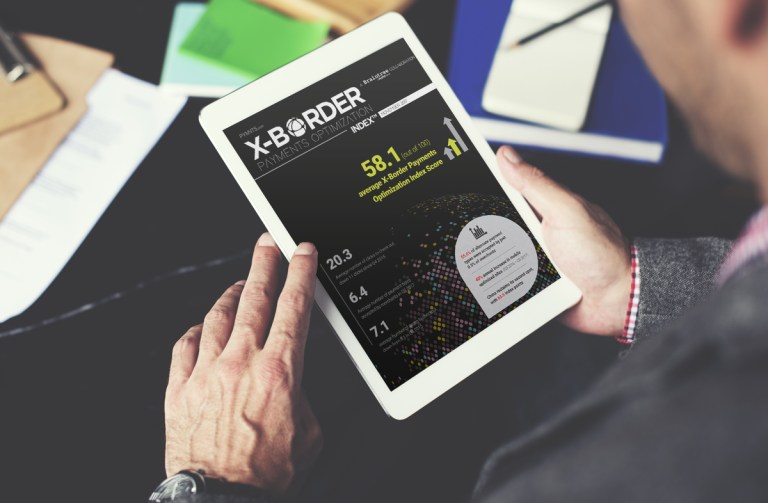
In the internet age, consumers are more likely than ever to make a purchase from a merchant outside their own borders.
But even if their packages travel across the world to get to them, shoppers expect the process to be as simple — or they won’t make the purchase at all.
In the latest issue of the PYMNTS X-Border Payments Optimization Index, a Braintree collaboration, PYMNTS conducted in-depth research on hundreds of merchants across 10 countries to measure the online shopping friction cross-border shoppers experience on international merchants’ websites, which can end with consumers abandoning purchases and merchants losing sales. The Index scores merchants on a scale of zero to 100, with a merchant scoring a zero serving up an enormous amount of friction and a merchant scoring 100 providing a seamless shopping experience.
The data inside the latest edition of the Index reveals that merchants are slowly improving their global inclusiveness, with the average Index score rising to 58.1 out of 100 from 56.8 out of 100 in Q1 2017. The change was largely driven by an increase in merchants working to make it easy for consumers to navigate their websites and complete transactions, which research revealed are the two most important attributes in compiling a high index score.
Other takeaways from the latest X-Border Payments Optimization Index include:
– The U.S. remained on top, coming in as the most cross-border friendly country PYMNTS studied, with an Index score of 65.9 out of 100. Meanwhile, China rose from fourth to second place with a score of 63.9 out of 100, followed by the U.K. in third with 63.2 out of 100.
– The Travel industry received the highest Index score with a 64.8 out of 100, followed by the Apparel and Accessories industry (63.0 out of 100) and the Housewares and Home Furnishing industry (59.4 out of 100)
– Visa is the most commonly accepted payment type, accepted by 94.5 percent of merchants, followed by Mastercard (accepted by 94 percent) and PayPal (accepted by 79.8 percent)
To find the rest of the research and analysis, download the Index below.
How regulations and licensing are hampering X-Border trade
The world may be getting smaller, and international commerce more common, but a shrinking world doesn’t necessarily mean cross-border commerce has become simple.
In fact, according to Eugene Laney, head of international trade affairs at logistics company DHL Express, the evolution of technology and commerce has come with equivalent shifts in regulations and consumer expectations. The result? Perhaps the largest changes in the history of cross-border commerce.
In an interview with PYMNTS for the Index’s feature story, Laney shared his thoughts about the customs and licensing issues continuing to mar the growth of cross-border trade, and emerging technologies that may offer a brighter borderless future.
“A lot of countries are suspicious of eCommerce because it’s competitive to the domestic retailers,” he explained. “So, a number of countries have put up barriers, whether it’s in form of additional taxes and duties, or making it difficult for you to obtain a license to sell your goods into that country, or something as simple as not allowing you to have a relationship with a warehouse in their country to distribute your product. So, there are a number of market access issues.”
To read the full story, download the Index.
To download the November 2017 PYMNTS X-Border Payments Optimization Index, a Braintree collaboration, fill out the form below.
About the Index
Each quarter, the PYMNTS X-Border Optimization Index™ tracks the journey of more than 180 merchants who are vying for their share of the global eCommerce windfall. The index takes the pulse on how merchants are improving on attributes conducive to international eCommerce in countries that include Canada, China, France, Germany, Italy, Japan, Mexico, Spain and the United States.